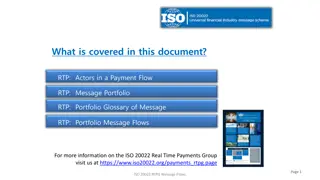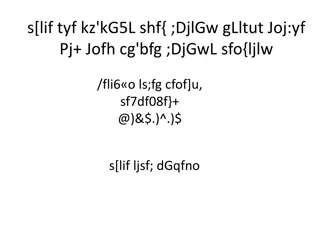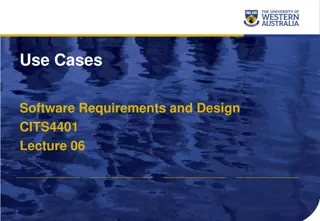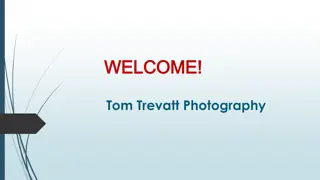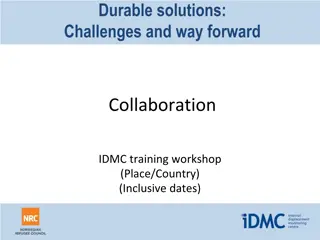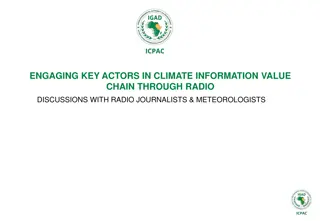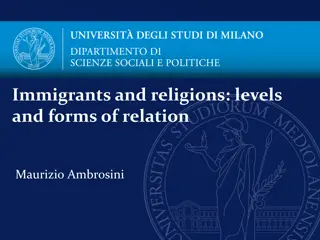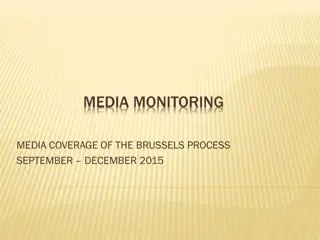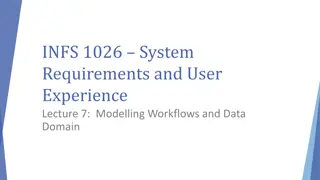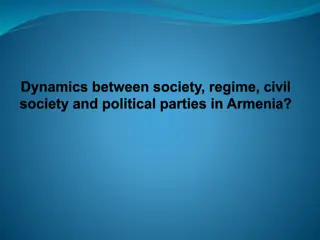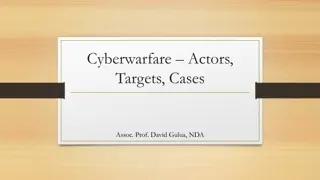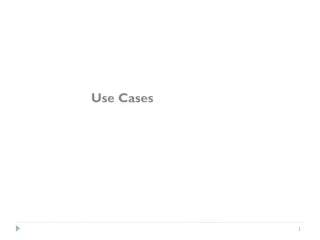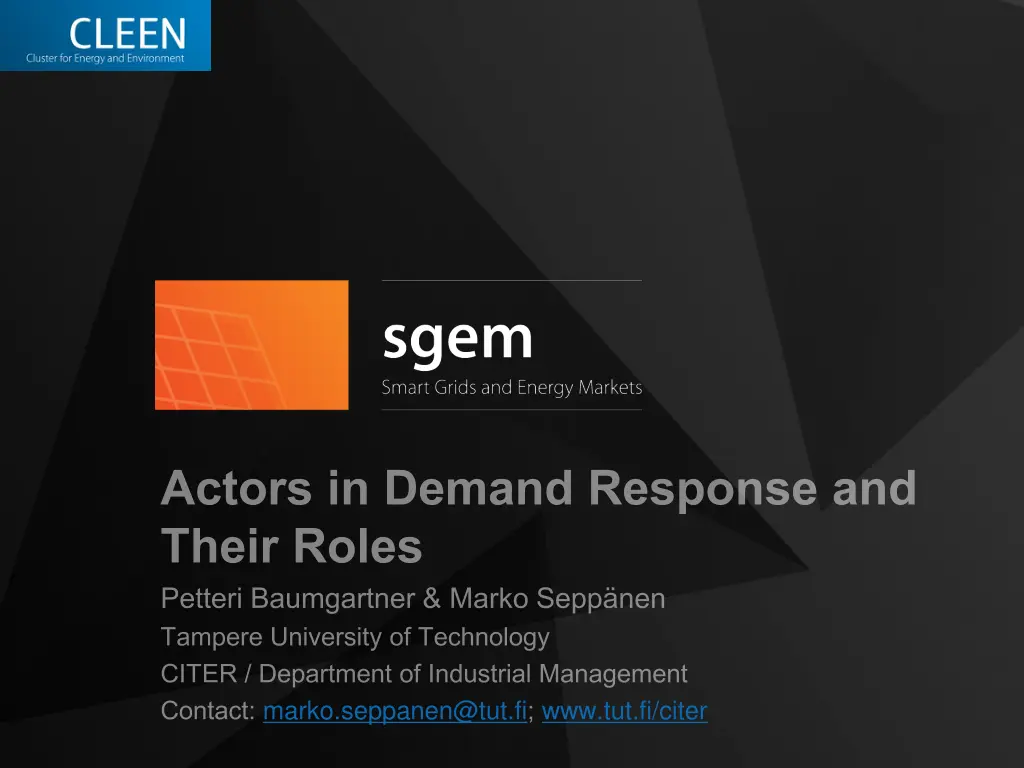
Crafting Business Opportunities with Smart Grid Technologies
Explore the concept of business ecosystems in identifying and crafting business opportunities using Smart Grid technologies like AMR and HEMS. Learn about demand response, business ecosystem approach, technologies, and more. Discover how various actors collaborate to create value for customers within a business ecosystem.
Download Presentation

Please find below an Image/Link to download the presentation.
The content on the website is provided AS IS for your information and personal use only. It may not be sold, licensed, or shared on other websites without obtaining consent from the author. If you encounter any issues during the download, it is possible that the publisher has removed the file from their server.
You are allowed to download the files provided on this website for personal or commercial use, subject to the condition that they are used lawfully. All files are the property of their respective owners.
The content on the website is provided AS IS for your information and personal use only. It may not be sold, licensed, or shared on other websites without obtaining consent from the author.
E N D
Presentation Transcript
Table of Contents 1. Introduction 2. Business ecosystem approach 3. Technologies 4. Demand response s business ecosystems 5. Conclusions The aim of this slideset is to demonstrate how business ecosystem approach can be used in identifying and crafting different business opportunities based on some Smart Grid technologies/solutions (AMR and HEMS). Further information on SGEM research programme, http://www.cleen.fi/en/sgem
What is demand response? The U.S. Depart of Energy defines DR as: Changes in electric usage by end-use customers from their normal consumption patterns in response to changes in the price of electricity over time, or to incentive payments designed to induce lower electricity use at times of high wholesale market prices or when system reliability is jeopardized. (2006, p. 6) MWh Time Actual demand DR actions taken
What is demand response? Demand distribution system operators (DSOs), transmission system operators (TSOs), suppliers, or third-party aggregators that contract with DSOs, TSOs, or suppliers. When an event occurs, customers are notified by a DR operator (one of the listed above) and typically respond by shedding load. The DR operator, i.e., aggregator the missing player? Third-party aggregators enlist end users to participate in demand response curtailment and sell the combined load reduction to DSOs, TSOs, or suppliers. Typically, the aggregator takes a percentage of the demand response incentive as compensation, passing the rest on to the consumer. response programs are administered by
Definition of business ecosystem In his book, Bionomics: Economy as Ecosystem, Michael Rothschild (1990) argues that key natural phenomena are central at business life, too. According to James Moore, in business ecosystems: Companies co-evolve capabilities around a new innovation: they work co-operatively and competitively to support new products, satisfy customer needs, and eventually incorporate the next round of innovations. (1993, p.76)
Visualization of business ecosystem Business ecosystem can be described as a network of actors that are bound together through collective operations to produce a holistic entity offering value for customers and satisfying their needs (Adner, 2006; Bahrami & Evans, 1995; Ginsberg et al., 2010; Iansiti & Levien, 2004a; Lusch, 2011; Moore, 1993; Teece, 2007). Adner s (2012, p.87) view on business ecosystem: Supplier 1 YOUR PROJECT Intermediary 1 Intermediary 2 End customer Supplier 2 Supplier to complementor 1 Supplier to complementor 2 Complementor 1 Complementor 2 Supplier to complementor 1
Case example: Amazon versus Sony In his seminal book, The Wide Lens: A New Strategy for Innovation, Adner (2012) presents a few case examples of innovation ecosystems; for instance, Sony versus Amazon in the race of e-book readers. Adner (2012, pp.88 99) attests that Sony failed mainly for its inability to attract publishers with its PRS-500 e-book reader. Publishers, however, are fundamental element in the ecosystem since they provide the content. With its Kindle, Amazon overcame the ecosystem problem by offering a closed platform, thus obviating the concerns about digital right management (DRM). The Kindle featured built-in Wi-Fi, too, enhancing the ease of use. The next slide presents the corresponding ecosystems.
E-book reader ecosystems Wi-Fi Other components End Amazon.com Amazon Kindle customer Amazon DRM Authors Publishers E Ink screen Other Retailers End customer Sony Reader components Sony DRM Authors Publishers Connect.com
Case example: Friendster versus MySpace Friendster is a social site that allows users share videos, photos, messages, and comments with other members via their profile. Friendster was founded in 2002, beating MySpace by a year, let alone Facebook (founded in 2004). However, the service could not hold the increasing number of users and it became impossibly slow once it got popular. In other words, some elements in the ecosystem could no hold the increasing number of users (Love & Lubin, 2011). This steered the users to check out MySpace which managed to scale its ecosystem elements according to users.
Case example: MySpace versus Facebook Eventually, MySpace was run over by Facebook. Facebook understood the importance of complementary services, i.e., complementors (Hartung, 2011). It is the vast number of complementors that has been enabled Facebook to attract plethora of different types of users there is something for (almost) everyone on Facebook. In conclusion, the ecosystem shall converge multiple elements in order to thrive.
Automatic meter reading AMR enables collecting electricity consumption data in an hourly basis Enables hourly-based energy tariffs, and helps all actors (DSO, supplier, consumer) to control the balance between supply and demand The meters can be controlled remotely means they can be switched on and off EMV (2013) argues that switching on and off the meter is not DR but rather a standard network operation Price-based DR program can be deployed via AMR but not direct load control. Consumers have the responsibility to execute on-demand control commands to participate in DR
Automatic meter reading DSOs have the responsibility of AMR implementation and measurement Both DSOs and suppliers have access to the AMR data The Finnish Energy Market Authority (EMV, 2013) stipulates that DR should be excluded from network operations, Means that neither DSOs nor TSOs are ineligible to offer DR services In Finland, the Section 5 of the Limited Liability Companies Act (624/2006) stipulates the purpose of an incorporated (or limited) company is to generate profit to the shareholders System operators cannot make loss, although the loss could be compensated for by profiting from unbundled DR services
Home energy management system HEMS features more functionalities than AMR-based system HEMS enables integration with other home automation features Third-party aggregators could offer turn-key aggregation, whereby a participant s HEMS automatically initiates energy- saving measures at the onset of a demand response event Using an existing HEMS connected via an internet gateway, a facility s non-critical load is intelligently and automatically reduced by implementing predefined operational changes Cycling equipment, turning off or dimming a portion of facility lighting and/or controlling the use of other energy-intensive processes
Home energy management system Consumer s comfort and convenience can be maintained by constant real-time monitoring If maximum/minimum building temperature or minimum lighting levels are reached during the curtailment, the site automatically reverts to its normal operations HEMS can be implemented independently uncoupled from AMR No regulatory issues concerning operation responsibilities or liabilities HEMS can be attached to AMR, too
Consumers role Consumers are the customers of suppliers and DSOs. However, the terms cannot be used interchangeably when speaking of demand response For example, a third-party aggregator sells the load curtailment to suppliers, which makes the suppliers the customers In the DR context, consumers rather make the DR service provider s offer viable than act as the customers of it Consequently, the emergence of DR renders the current view obsolete DR services dislocate the traditional structure of the electricity supply ecosystem (see the next slide)
Demand response ecosystem (with AMR) DR service operator enlists consumers/ prosumers to participate in DR program (i.e., the operator enables prosumers to sell negawatts on the market) Back coupling prosumer to the operator via DSO enables the operator s use of AMR metering data.
Demand response ecosystem (with AMR) Information and communication technology complements the DR service operator since communication between the prosumer and the operator is compulsory The supplier is considered the end customer who purchases the DR service to control its balance settlement Another perception of the value proposition is to substitute the power exchange for the supplier Operator sells negawatts on the market as substitute for the back-up generation Supplier could include DR in its offer taking care of the whole shebang by itself AMR technology lacks the intelligence that automatically controls curtailment, thus making AMR-based solutions unfeasible to some prosumers
Demand response ecosystem (with HEMS) HEMS provides the requisite intelligence to the premises HEMS is independent of the DSOs, subtracting the DSO from the ecosystem is possible. HEMS attached to other home automation features is considered since that can be seen to facilitate the adoption of DR, and future buildings can utilize home automation largely
Demand response ecosystem (with HEMS) DR is actually complementing typical HEMS offering HEMS service offers home automation (HA) and energy management (EM) to the prosumer Offering is complemented with DR, implying that prosumer can benefit greatly from the service Service can complemented with other features, as well (cf. Facebook ecosystem); e.g. automatic home surveillance Economic logic could be the same as in AMR case: the sale of negawatts to the supplier or operating on the market Third-party aggregators are more probable than all-inclusive suppliers due to the scale of business
Issues that are slowing DR business In Finland, issues that generally impede the emergence of DR are unclear regulation concerning DR, function divided market for distribution and supply, consumer participation, and limited functionalities to a certain extent Low prices of electricity and high quality of grid implicate no immediate need for demand response Low prices implicate low savings from DR System reliability is very seldom jeopardized The major issue, regulation, needs political actions Role of DSOs should be considered carefully DSOs could probably benefit greatly from DR but they seems to be ineligible for those benefits
What could be done? The regulatory model should be updated to meet the future needs of sustainable and secure electricity supply, including demand response Power-based tariff structures would emphasize the reality and pave the way for demand response services Power-based tariffs would require advanced metering infrastructure, more advanced than we have now Companies should concentrate on scalable business ecosystems with their offers to ensure competitiveness in the future Standardization of meters communication protocols could help in product development and harmonize the market Poorly executed the standards may restrict the emergence of otherwise viable innovations



